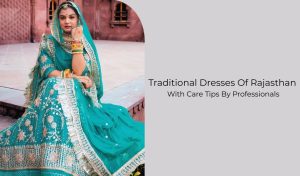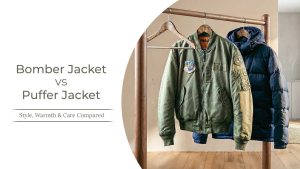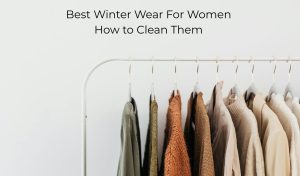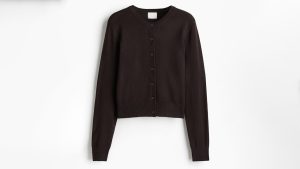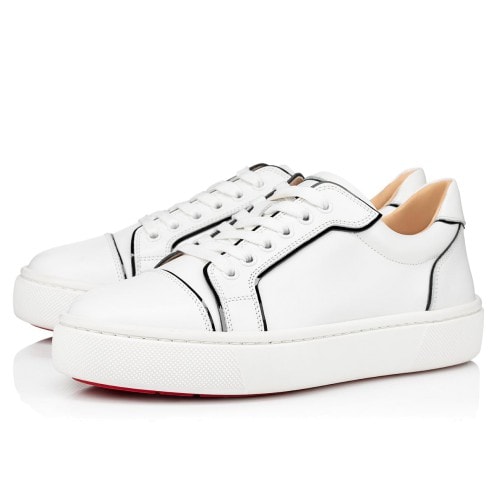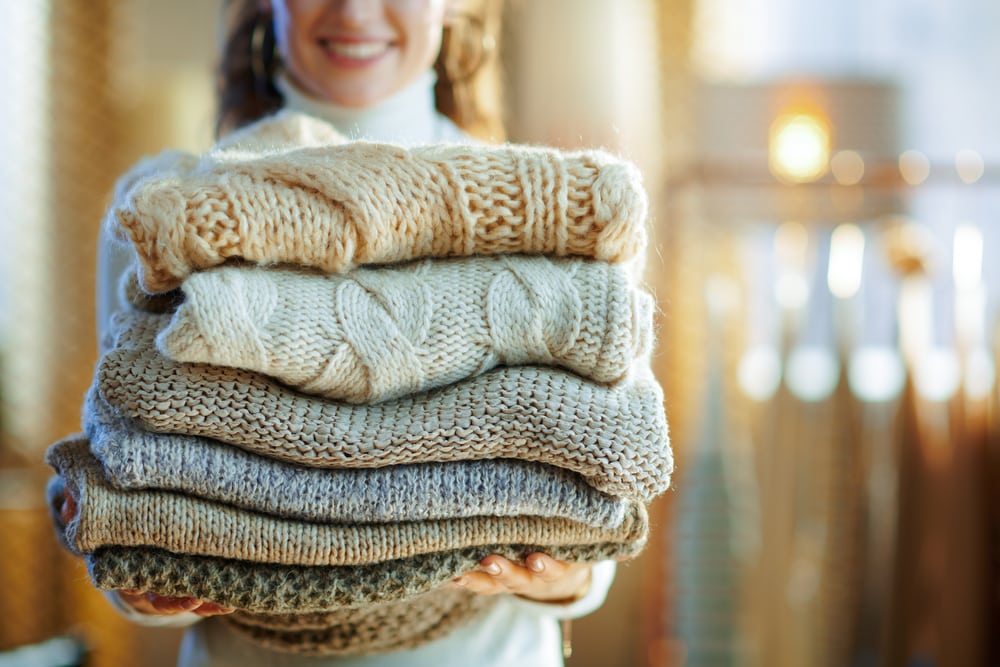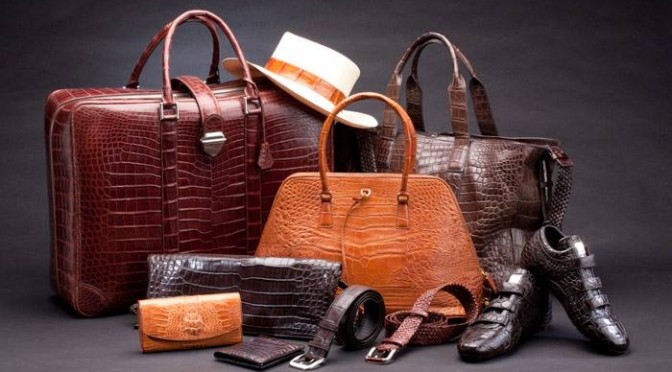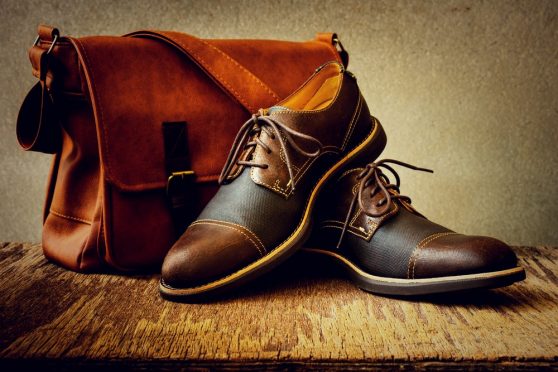In winters, men also get worried about their...
Read More- Blogs
- Dry Cleaning
- The Expert Ways Of Coat Washing
The Expert Ways Of Coat Washing At Home
- Amrita Singh
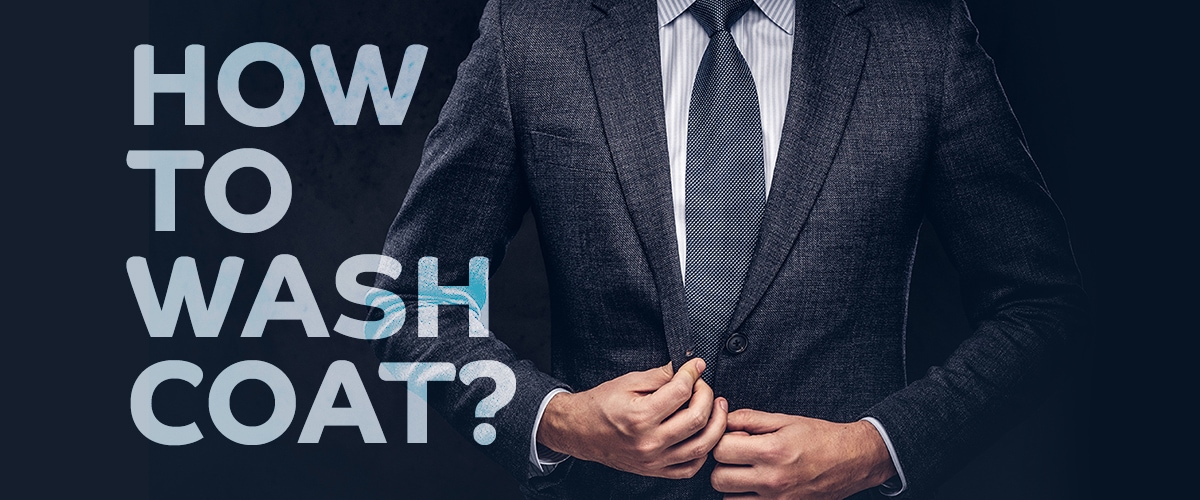
Table of Contents
Washing coats at home is easy if you know the right detergents and methods to use and how to handle different fabrics properly. So, we have come up with this guide to share everything that can help you clean coats like a pro.
Let’s see what you should know:
Things You Should Do Before Coat Wash
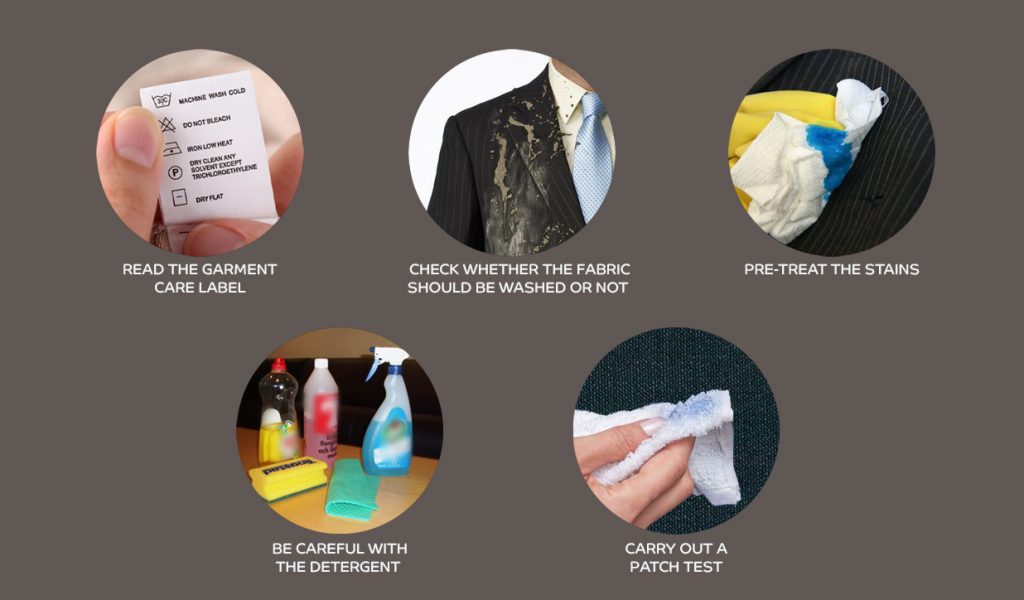
Before you start washing, there are certain things that you should do otherwise the fabric of the coat might get damaged.
Read the garment care label
Manufacturers mention clearly whether the garment can tolerate normal wash or not. If the label says “hand wash”, or “machine wash” you can clearly wash the coat at home. When a label says “dry clean” it means you can process the garment at home. But it needs special care and methods, hence, dry cleaning is a better method to choose.
There are coats labelled as “dry clean only”, these are meant to be dry cleaned only. However, you can use a home dry cleaning kit for such coats. You will need special materials and tools, and a home dry cleaning kit may not be ideal for all types of fabrics. Hence, if you are not sure about how to deal with a garment or you cannot arrange the materials and tools required, it is better to get dry cleaning service.
Check whether the fabric should be washed or not
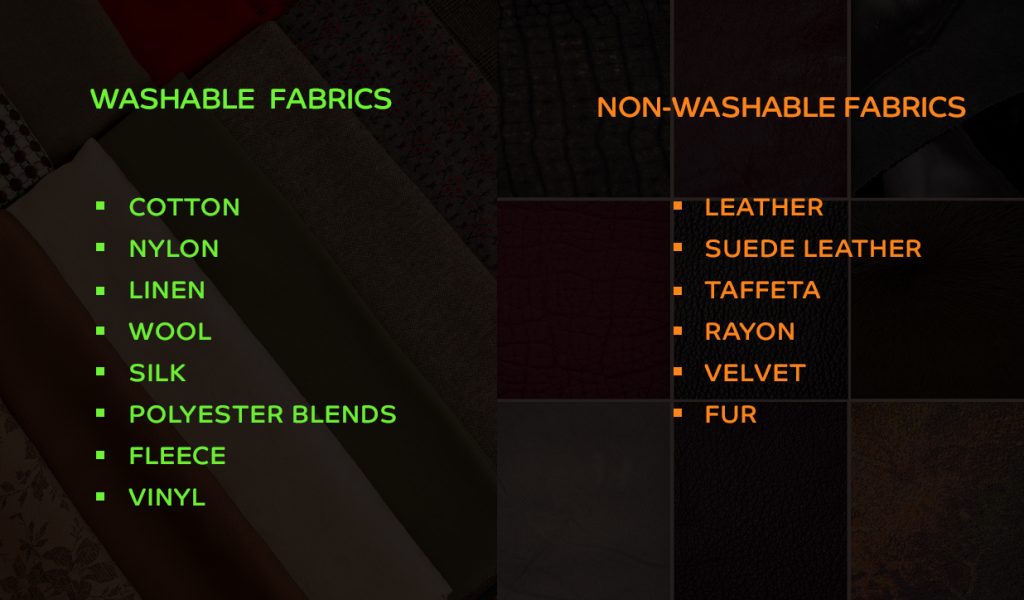
As mentioned above some “dry clean only” clothes can be washed at home. But this does not apply to every fabric. Hence, after checking the garment care label, you should see whether the fabric is washable or not. We have separated the washable and non-washable coats below:
- Washable coat fabrics: Cotton, nylon, linen, wool, silk, polyester blends, fleece, vinyl
- Non-washable coat fabrics: Leather, suede leather, taffeta, rayon, velvet, fur
Pro tip: Try not to wash coats until the dirt is visible or there is a stain on them. It is not ideal to wash clothes after single usage. So, better wear a coat 4-5 times before washing. Lesser washes can actually increase the lifespan of garments.
Pre-treat the stains (if any)
Always try to remove a stain immediately after noticing it otherwise it may set strongly. Next, you should know that it is crucial to choose the right stain remover before coat wash on the basis of stain, fabric and garment care label. If you are using commercial stain removers or stain sticks like Tide to Go pen, you can simply follow the instructions on the label. Generally, you should pour 4-5 drops of stain remover on the stain and blot it gently.
Be careful with the detergent
Some people think using extra detergent can make give better results while washing coats. That’s not true. These days almost every brand is claiming to be eco-friendly and mild on clothes. But you should not forget that they contain chemicals anyway. And overusing chemicals is never beneficial for your clothes. Hence, do not overuse detergent. It is enough to use the prescribed quantity.
Next, you should choose a detergent on the basis of the colour of the coat, here is what you can keep in mind:
- For dark-coloured coats: You can use mild detergents like Ezee on dark-coloured clothes. Ezee is promoted especially for wool detergents, however, it is ideal for all types of clothes. Detergents with harsh chemicals can cause colour bleeding.
- For white coloured coats: White colour often gets pale with time. Use detergents or detergent boosters containing oxy bleach like Vanish to get rid of the paleness.
Carry out a patch test
Take 1 teaspoon (approximately 5 ml) of your laundry detergent, and mix it with 2-3 tablespoons of water. Dip a cotton swab in the liquid and gently rub it over your coat. Do it on an area that is less visible like the inside of the collar or inside seam. Check how the fabric reacts. In case you spot colour bleeding on the cotton swab, it is a sign that the fabric cannot stand washing at home. You should consider sending it to the dry cleaners.
Now, let’s move ahead.
How To Wash Coats At Home
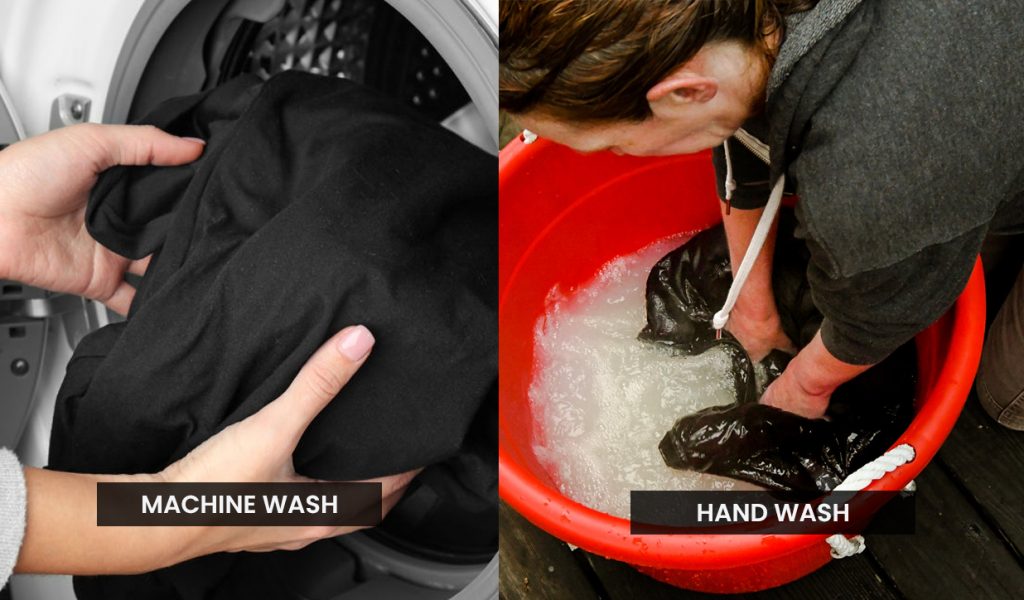
You have two options for washing coats at home: Hand wash and Machine wash.
Machine wash can be further divided into the following categories:
- Washing Machine: You can wash coats in the regular washing machine at your home.
- Dryer Machine: You can use a home dry cleaning kit or dryer sheets to clean “dry clean only” coats at home.
Hand washing is always better than using a washing machine. Your garments face very less agitation in hand wash which increases their lifespan. However, people still prefer washing machines due to lack of time or convenience. Machine wash can be safe only if you stay careful with the wash cycle settings.
You can prefer any of these two methods depending on your convenience and garment care label. For example, coats with the label “hand wash” or “hand wash only” should not be washed in a machine. Moreover, hand wash is recommended for delicate fabrics like wool and silk. Whereas, fabrics like linen, polyester blend, nylon, cotton, vinyl, fleece, etc. can be washed by machine.
Don’t have time to wash coats properly at home? Send them to us.
Let’s see how to hand wash coats:
How to hand wash coats at home
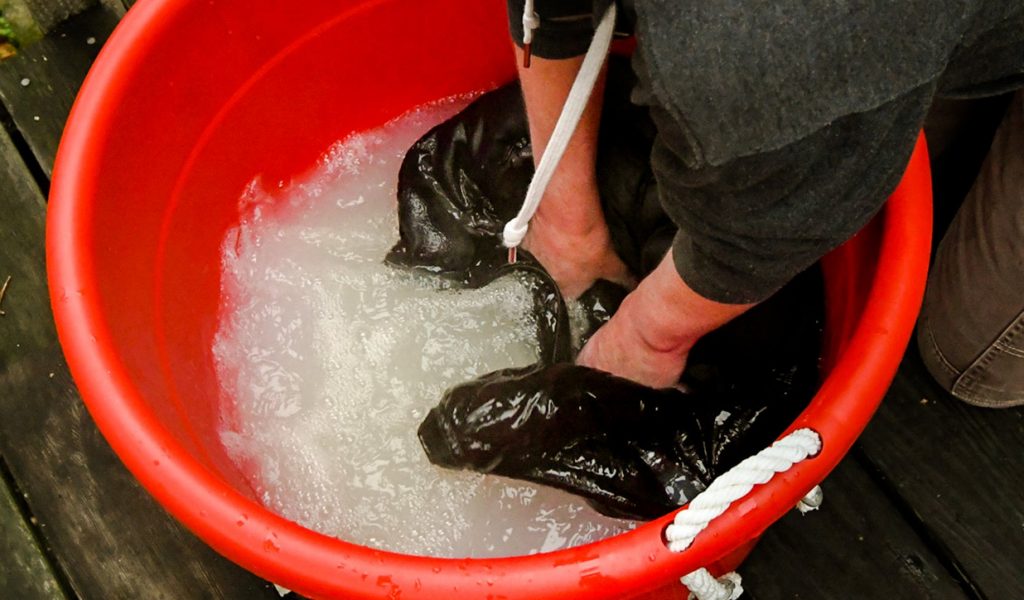
Gather everything that you need
These are the things you will need while washing coats at home:
- Tub or Bucket
- Stirring tool (optional)
- Rubber gloves (optional)
- Laundry detergent
Fill water in a tub/ bucket
Take a large tub or bucket and fill it in half with cool water. Make sure that the container is big enough to soak the coat.
Add a mild laundry detergent
Add 1 teaspoon or 5 ml of mild laundry detergent to the water. Mix it properly with your hands until you see suds. You can wear gloves or use a stirring tool.
Put the coat in the tub/bucket & rub gently
Submerge the coat in the water. Move it into the bucket or tub to ensure that it is drenched completely. Rub the coat gently for 2-4 minutes. Do not assert pressure as it may damage the garment.
Rinse the coat with clean water
Now, take out your coat from the bucket and place it on a clean surface. You can also put it in some other bucket or tub. Meanwhile, empty the previous tub/ bucket and clean it with plain water. Once the residue of soapy water is gone, refill the tub/ bucket with clean water to rinse the coat.
Soak the coat until sudsy
Let the coat soak in clean water until it is sudsy. Lift and lower it 4-5 times and take it out. Change the water in the bucket/ tub and repeat the process 2-3 times or until you see clear tap water dripping from the coat instead of soapy water.
Get rid of excess water
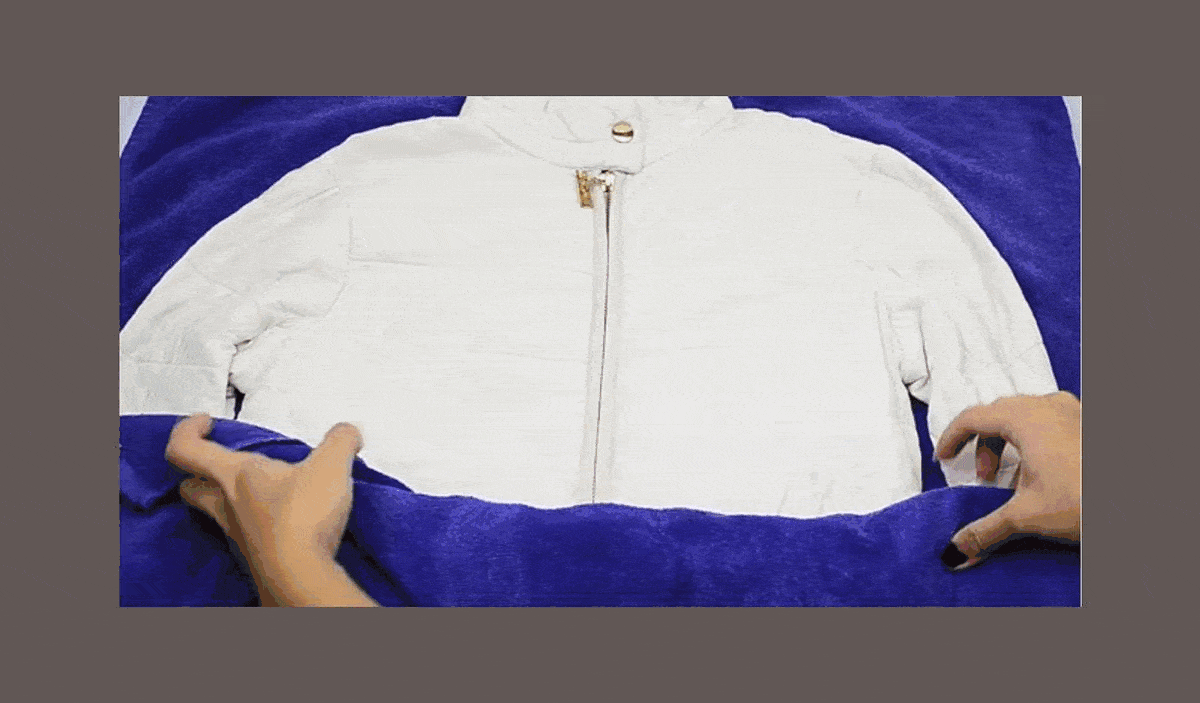
Take a clean towel. Lay it on a flat surface, now place the coat on the top of the towel. Fold one end of the towel and then roll both the towel and coat tightly into a coil with slight pressure. This way you can easily squeeze out excess water. Unroll the towel, and repeat the process if you still see water dripping from the coat.
Air-dry the garment
Just like hand washing is better than machine washing, air drying is better than using a dryer. Especially for some fabrics that are delicate or contain embellishments, embroidery etc. air-drying/ line drying is a better option. Hang your coat or lay it on a flat surface (especially if it is wool) at a place where it does not come in contact with dust or dirt.
That was all about coat washing without a machine, now we will move to see how coats can be washed in a machine.
Your expensive coats deserve special treatment at Tumbledry stores.
How to wash coats in a machine at home
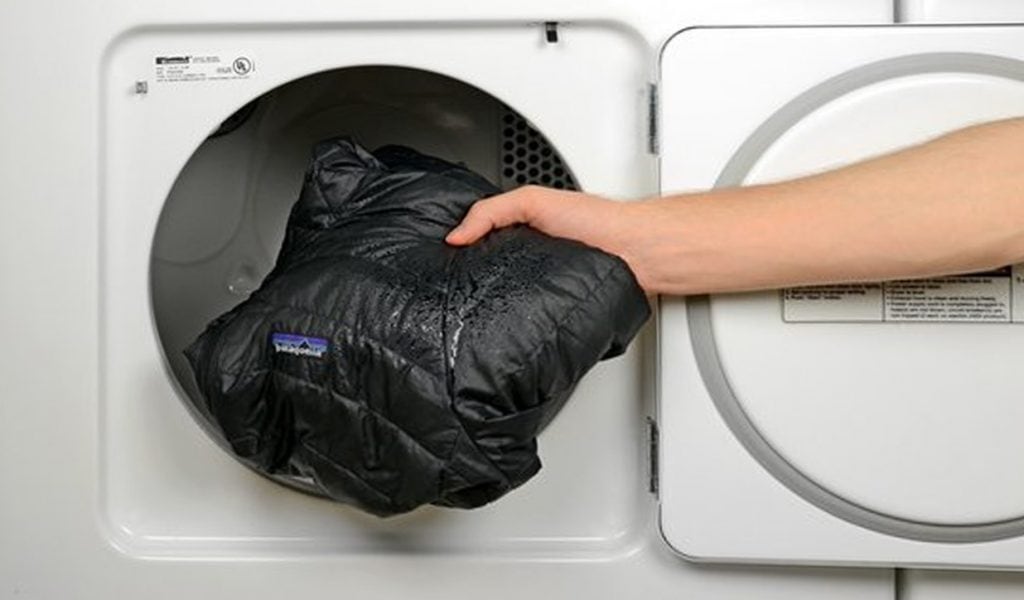
Gather everything that you need
It is better to keep everything needed for coat wash handy to avoid mess. Here are the following things that you might need for a machine wash:
- Mesh laundry bag
- Laundry detergent
- Stain remover
Put your coat in the washer
Check the pockets of your coat to ensure they are empty. Sometimes tiny items like pins, pens, coins etc. can tear the fabric inside the machine. Close all the zips and buttons. Next, you should turn the coat inside out and place it in a mesh laundry bag. This protects the delicate fabrics, embellishments, and special elements in the wash. Secure the mesh bag so that it doesn’t open during the wash cycle and the coat stays in its place. Now place it in the washer.
Add your laundry detergent
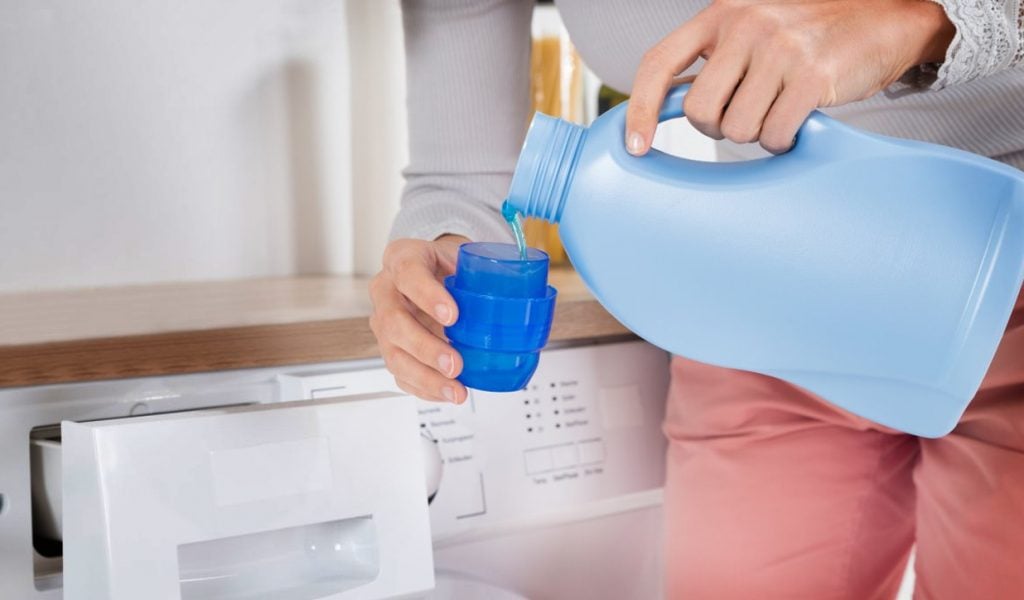
Pour 1 teaspoon or 5 ml of mild detergent into the machine. Make sure that the detergent label says “gentle”, “sensitive” or “mild”. It is not recommended to use heavily concentrated detergent for coat wash as it may harm the fibres.
Select the right cycle & run the machine
Set your machine on the delicate or low-spin cycle. Use cool water to wash coats in the machine unless it is specifically mentioned on the garment care label to use hot water. You can run the machine for 10-15 minutes.
Dry the coat after washing
Don’t leave the coat in the washer after the cycle ends to prevent wrinkles. Pull it out immediately and leave it to dry naturally. Air-drying or line drying is the best method. However, if you don’t have enough time you can use the dryer on a “delicate” or “tumble dry” setting. Never use a dryer if your coat is labelled as “dry clean only”.
Use dryer sheets for coat wash
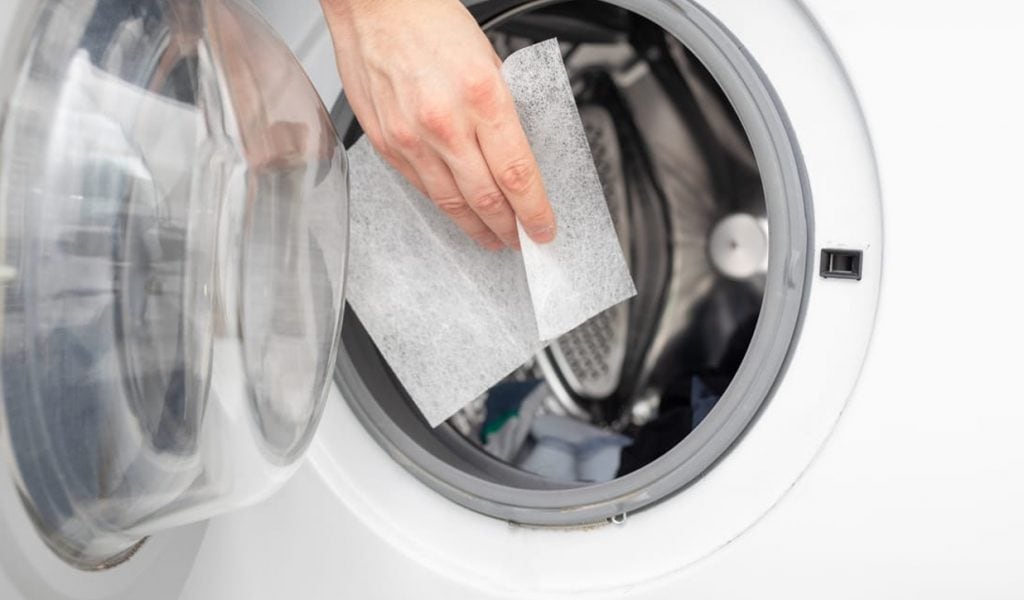
For the garments that have a “dry clean” or “dry clean only” label, you can always try a home dry cleaning kit or dryer sheets. You may easily find kits like “Dryel” and “Custom Cleaner” online. However, it is only useful if you have a dryer machine. Do not confuse it with the dryer of your regular washing machine. Because they are not heat-based dryers and clothes do not actually get “dry” in washing machines.
These kits claim to clean and freshen garments labelled with “Dry clean only”. Generally, they contain the following things:
- Stain removal solution
- Stain absorbent pads
- Heat-activated moist dry cleaning towelettes
- Cleaning bag for the dryer
- Instruction booklet
Make sure you check the instructions to see if the kit manufacturers have suggested not to use the kit on certain fabrics. If they do not recommend using it on your coat’s fabric, you might need to visit a dry cleaner. Meanwhile, let’s see how you can use a dry cleaning kit to clean your coats:
Treat the stains on your coat
If there are any stains, pre-treat them. You can use the stain remover pads or towelettes that come in a dry cleaning kit. The method of stain treatment may differ from kit to kit so you can refer to the manual guide that comes along with your kit.
In general, you can pour 4-5 drops of stain remover directly onto the stain. You can increase the quantity depending on the area covered by the stain. Place the stain absorbent pad underneath on the other side of the garment. Rub the stain gently. This will make the stain transfer to the absorbent pad.
Place your coat in the dryer
Check the instructions on the kit to see how many clothes a single sheet can clean. In general, one sheet can clean 4-5 light-weighted garments. So, if you have summer coats (they are generally light in weight) you can clean 4-5 garments using one sheet. In case you are trying to clean bulky winter coats, then one sheet will be needed per garment. You can put the dryer sheet and the garment in a reusable laundry bag.
Run the dryer on medium heat
In general, you should run the dryers for 15-20 minutes on “medium” or “normal” heat. However, we suggest you read the instructions on the dry clean kit to see the exact time of running a dryer.
“Low” or “delicate” heat setting might not be effective enough for cleaning. Whereas high heat can harm the fibres of your coat.
Air dry your coat immediately
Remove the coat from the dryer once the cycle ends. Toss out the dry cleaning sheet and immediately air dry the coat to prevent wrinkles.
When You Should Visit Dry Cleaners For Coat Wash
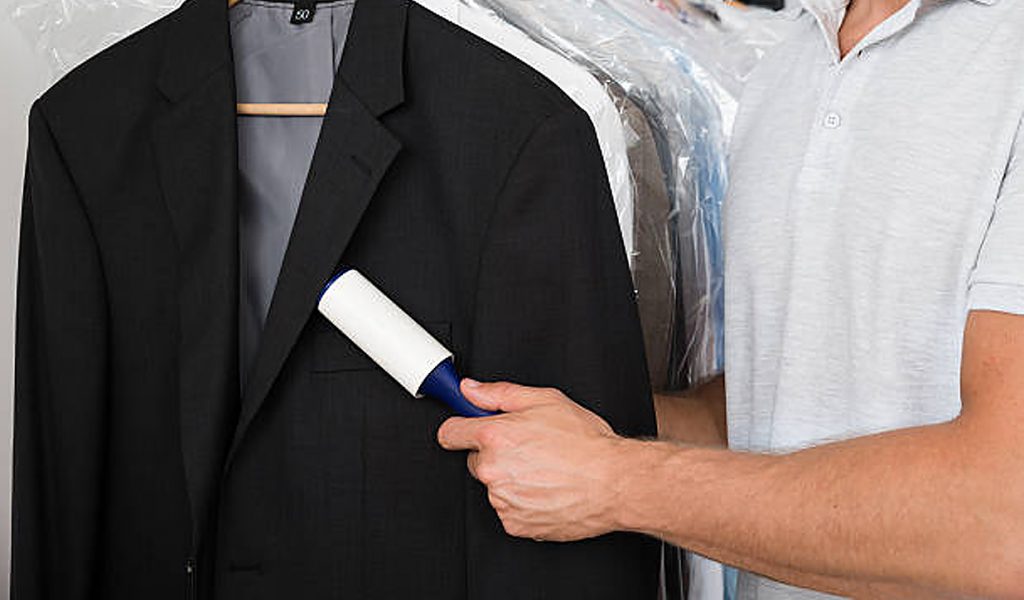
As mentioned in the beginning, some fabrics like fur, velvet, leather & taffeta are not washable. It clearly means you should not wash coats made up of these fabrics at home. Apart from them, you should check the following things to know when you should not wash coats at home:
- Leather elements: If you have a leather coat we do not recommend washing it at home. If the coat has a leather patch on sleeves, or pockets or carries any other leather element you should avoid washing it at home. Because leather is a natural fibre and it should not be contacted to water as it may get brittle. As a result, the overall look of your coat will be ruined.
- Embellishments: Coats having heavy embellishments can get severely damaged in regular washing machines. The embellishments can get damaged even during hand washing coats.
- Structured material: Some coats are made with structured material inside such as interfacing and padding. You should not wash such coats in a machine as they can become dislodged. Hand washing coats with structural elements is not very effective as the detergent might not deep clean the layers of padding.
- “Dry clean only” label: Last and the most important factor is the label of your coat. If you see “dry clean only” written on the labels, you can try using a home dry cleaning kit. However, professionals take all the necessary precautions with such garments and use chemicals that are best suited to them. Hence, the ideal thing is to visit a dry cleaner.
Want your coats cleaned, dried & delivered within 24 hours?
Key Takeaway
You can definitely wash coats at home if the fabric is washable. So, before you rush to a wash session, check the garment care label and see whether your fabric can tolerate normal wash or not. After that, you should choose the method of washing, i.e., hand washing or machine washing. It depends on the garment care label and your convenience. It is not recommended to wash coats after single-time usage. The lesser you wash garments the longer they will last. Wash coats as suggested above in the article. Once your coat is clean, prefer air drying over using a dryer or washing machine. Just in case you can’t resist the dryer, set it on a delicate dry cycle. In case you have a coat with structured elements, embellishments or leather patches, you should send it to the dry cleaners.
Disclaimer: The opinions expressed in this article are those of the author. They do not necessarily purport to reflect the values or views of Tumbledry.
How To Find The Best Dry Cleaners In
Dry cleaning our clothes have been an important...
Read MoreHow to Choose the Best Winter Suit for
Winter suit for women have plenty of variety...
Read MoreHow to Maintain Winter Sweaters: Dos & Don’ts
Wool sweaters are among the necessities for winters....
Read MoreTraditional Dresses Of Rajasthan For Men & Women:
When it comes to best traditional dresses in...
Read MoreBest Winter Jackets For Men: Style, Warmth &
In winters, jackets for men are significant parts...
Read MoreBomber Jacket vs. Puffer Jacket: Style, Warmth &
Bomber or Puffer, both types of jackets have...
Read MoreBest Winter Wear For Women & How to
Winter wardrobes need much care and expert tips...
Read MoreBest Cardigan Sweater For Women To Style In
In winters, there are limited options to style...
Read MoreTop 10 Stylish Sweater for Women: With Expert
Winters are here, and we all know women...
Read More




